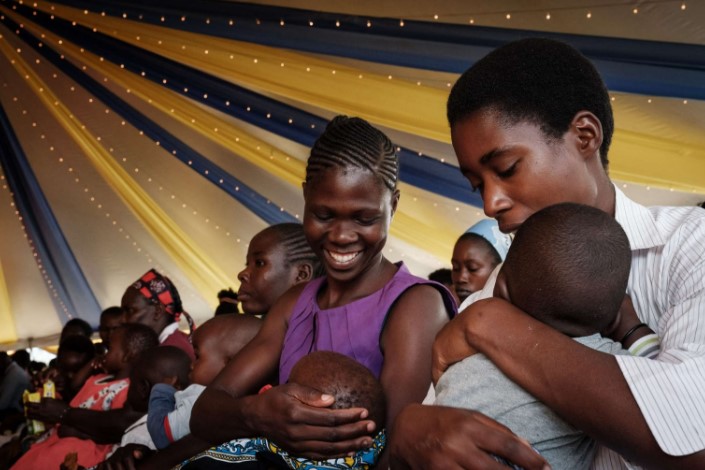Kenya records more male births than female for tenth straight year

The Kenya National Bureau of Statistics (KNBS) reported a sex ratio of 106 male births for every 100 female births in 2024, marking the highest male-to-female ratio in over a decade.
In 2024, Kenya saw its lowest number of registered births in five years, with a total of 1.11 million births, down from 1.19 million in 2023.
For the tenth consecutive year, the country recorded more male births than female, continuing a pattern that has raised concerns among health experts and sociologists alike.
More To Read
- MPs alarmed by soaring caesarean births, demand overhaul of maternal care in Kenya
- New hope for mothers as WHO unveils life-saving guidelines to tackle postpartum haemorrhage deaths
- Vaccines and motherhood: Are AI-generated health messages working in Kenya and Nigeria?
- Over 6,000 Kenyans join global run in Nairobi to raise awareness on maternal deaths
- Stakeholders sound alarm over funding shortfalls as Kenya celebrates World Contraceptive Day
- WHO Africa summit urges investment to end maternal mortality
The Kenya National Bureau of Statistics (KNBS) reported a sex ratio of 106 male births for every 100 female births in 2024, marking the highest male-to-female ratio in over a decade. This translates to 570,807 boys born, compared to 539,706 girls.
The report also recorded nine intersex births, a slight increase from four in 2023, and 41 births with an unstated sex.
For many young women, motherhood is an early milestone. According to the report, women aged 20 to 24 continued to account for the largest share of births at 30.4 per cent.
Many of these women are married, reflecting the deep cultural preference for traditional family structures.
The survey indicates that only one in ten births was to a single woman, and just a fraction of births came from divorced or widowed women, with those groups accounting for less than 1 per cent each.
Teenage pregnancies among girls aged 15 to 19 have been steadily decreasing. The proportion of births from teen mothers dropped from 11.8 per cent in 2023 to 11.1 per cent in 2024.
These trends suggest that efforts to reduce adolescent pregnancies may be having some positive effect, even as the issue remains a concern for the health and education sectors.
In hospitals across the country, deliveries fell by 3.2 per cent, with 1.21 million deliveries recorded in 2024.
However, the number of caesarean sections saw an uptick, rising by 0.6 per cent to 220,505.
Caesarean births now account for 18.2 per cent of all hospital deliveries, signalling changing medical practices.
Meanwhile, normal deliveries, which were once the standard, dropped to just over 975,000, and there was a decline in breech and assisted vaginal deliveries.
The increase in caesarean deliveries has sparked concern among health professionals. Experts highlight that the trend is influenced by various factors, such as better access to healthcare, evolving maternal health strategies, and a shift towards surgical intervention.
The Ministry of Health has urged continuous monitoring to ensure that surgical options do not overshadow the need for proper support for natural births and maternal health education.
Sociologists are beginning to worry about the long-term impact of the continuing male birth surplus. The sex ratio has remained skewed towards males for years, raising concerns about the future social implications.
Top Stories Today













































